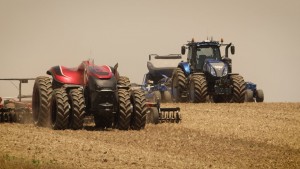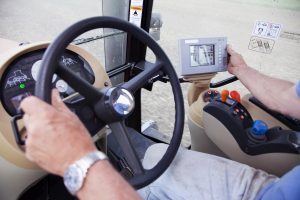SALEM, Ohio — The world of digital agriculture is continuing to advance before our eyes, says John Fulton, associate professor in Ohio State’s College of Food Agriculture and Biological Engineering.
“The fact is that people are all connected,” said Fulton, and it’s only a matter of time before farms are all connected as well.
Fulton and Scott Shearer, chair of Ohio State’s College of Food Agriculture and Biological Engineering, share a glimpse of what’s on the horizon for precision agriculture.

Automation
We’ve already gotten a peek into the future of autonomous machines with Case’s unveiling of their autonomous tractor at the Ohio State Farm Science Review in the fall of 2016.
According to Scott Shearer, the potential is there. “If we can go to full autonomous, we could have someone sitting in an office controlling eight to 10 tractors,” he said.
These tractors would be smaller, lightweight tractors that would reduce compaction and potentially increase yields by 5-10 percent, he said.
Fulton is a little more cautious. “I don’t know if we will go full autonomous,” said Fulton. “I might have two machines in the field, but one of those machines will have a person on it.”
The biggest concern is liability, said Fulton. Once companies like Tesla, Google and Uber increase their autonomous cars on the road, it will really open up the possibility on a social front, he added.
Drones
Remote sensing with unmanned aerial vehicles (UAV), or drones, has potential, but right now there is not a good enough business model, according to Shearer.
“You can get high quality images, but stitching them together and providing that data set” is the biggest challenge, he said. UAVs can help with that.

Shearer said regulations have been relaxed since UAVs first hit the scene but, “we need to get to a point where they fly on a routine basis and they need to be flying autonomously — without much human interaction.”
Sensors
Canopy sensors and rapid phenotyping will help producers take a closer look at crop disease from the base of the plant.
“We look from above the crop and that’s OK, but a lot of the disease pressures are going to come from within the crop canopy,” said Shearer. Soil-based sensors will collect information like soil moisture to show producers where the problem areas are in fields.
“We are not going to put a grid of sensors in but, one or two, in a wet area, a dry area, or on a slope,” he said. These buried sensors would have batteries that would last up to five years, and would be cloud connected to retrieve the data.
Big data
Big data can give farmers a better understanding of their cropping systems. “Digital ag is what we are going to do on thousands of fields,” said Shearer. “We are going to look at hybrids and cropping systems and varying production practices.”
“We are going to see a shift of inputs being managed prescriptively,” said Shearer.

Analytical tools to manage inputs will most likely mature in the next five years, according to Fulton. Growers will be able to benchmark themselves against their own numbers and that of other growers to see how they are progressing.
“Pretty much everyone is looking at tools to be able to provide that,” said Fulton.
Smart farms
A majority of the machines today are connected, said Fulton, it’s just a matter of if the farmer wants to pay for the service to turn it on. Fulton says connecting fields is the next step.
Producers will start to see more temperature sensors, nitrate sensors and other wireless sensors — all cloud connected.
As companies get better at streamlining the data, producers will be better able to combine their data and know exactly what is going on without spending as much time in the fields.










